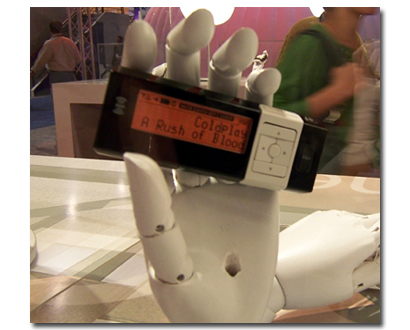|
|
 |
Knowledge Is Key
For Intelligent Decisions
Satellite Logic is a leading,
authoritative source of information in
the Satellite Industry. Located in the
heart of the Silicon Valley, Satellite
Logic provides one of the most
valuable and comprehensive
knowledge bases on the Satellite
market! This is a primary Worldwide
information center which enables our
clients to analyze, evaluate, inquire
and select their best tailored
solutions. Our company sets the
industry standards for targeted
buying leads, reflecting a dramatic
advance over traditional marketing
solutions.
|
|
|
 |

In order to listen to music or news on a satellite radio you don't need
a large device. Today everything gets smaller and smaller, and a
satellite radio shouldn't be different. In fact, if it wasn't for the
display, satellite radios could have been smaller than a desktop
mouse.
One of the most popular devices in this field is the portable,
handheld satellite radio. These receivers have been designed to be
carried in hand, just like walkman radios. They are wireless receivers,
usually with a built-in antenna and earphones. Obviously, they can
be used during outdoors activities. Handheld devices, such as XMís
MyFi and Siriusís Starmate, have everything you need if you plan to
listen to satellite radio while walking, jogging, working out, or
traveling. Most of them can record five to 50 hours of music and
radio programs on their built-in internal hard drive. The more
advanced handheld satellite radios can even play mp3 files. And since
most of these satellite radios can be used at home or in a car, they
come with home and car kits.
The first handheld radio satellites were perceived as no more than
nice gadgets for geeks, out of range of mainstream. Since then,
millions of people pay the roughly $12.95 a month to listen to up to
150 ad-free channels of satellite radio on these nonportable units.
These radios, which pick up content that XM and Sirius beam from
their satellites, are increasingly pre-installed onto high-end car
models by auto makers like General Motors and Ford.

One of the first handheld satellite radios was the Delphi MyFi XM2go.
Sirius is betting that the S50 is going to further expand this market.
Since satellite radio sales growth is driven largely by the auto makers
that pre-install units, Sirius and XM can potentially reach more
consumers directly through retail stores and vastly expand their
customer base.
Based on pre-manufacture studies, the S50 had been created with a
most surprising and controversial feature; Unlike traditional radio or
even XM's MyFi, the S50 wearable part can't receive live broadcasts
when not plugged into its satellite-receiving dock. Once plugged in, it
determines which three Sirius channels you listen to the most, and
downloads 1 gigabit, or up to 50 hours, of content (thus, the S50
name). Users can also program it to record certain regular shows or
upload their favorite MP3 music files.
This design avoids the reception problems that have plagued the
MyFi and helps the designers to reduce the S50's size and simplify
its use. The latter was important, as further research also found that
most users find the vast majority of existing electronics to be overly
complicated. There was a large number of consumers who felt that
the MP3 player involves too much work. And that affected the
technology strategy for Sirius.
The S50 had to look like a product that doesn't require a lot of work.
Its simplicity had become the greatest challenge. Today, the S50's
interface has just one large button. Simplicity became the magic
word.
The final unit is black, an homage to radios of the past. But the S50
measures just 1.9 inches wide, 3.9 inches high, and 0.7 inches thick,
and looks more like Apple's (AAPL) iPod nano than digital radio. As
with any portable device, the designers faced the trade-off between
size and battery life. To make that decision, they imagined the
various scenarios in which the S50 would be used and decided that,
as a baseline, the rechargeable battery had to last an entire coast-
to-coast airline flight of continuous play.
Some analysts say the S50 is priced too high to appeal to a broad
market. Perhaps users will opt for a plain iPod to download nonlive
music or podcasts, which are, essentially, grassroots talk shows.
The Delphi XM MyFi is another entry in the highly competitive battle
over digital music, a fight that pits XM against its immediate
competitor, Sirius Satellite Radio, but more broadly against on-line
music sources like Napster, and the makers of small, highly portable
MP3 and other devices. Until now the XM's service, along with that of
Sirius, has lacked the portability of devices such as the iPod and MP3
players. Now, with the MyFi, subscribers can receive XM's more than
130 channels of talk, news, sports, and commercial-free music, on a
device about the same size as a handheld organizer.
Unlike Delphi's plug-and-play satellite radio receivers, the MyFi
doesn't require an antenna and can be used with headphones. The
device also comes with a docking station for recharging and
accessories to hook it up to car stereos and home audio equipment.
|
|
|
|
